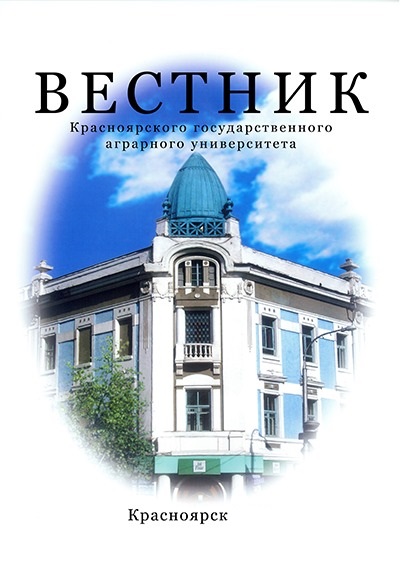The research objective was studying seasonal changes of fat and acid structure of fatty part of the cottage cheese delivered in distribution network. The research problems were to carry out the definition of mass fractions of 16 fatty acids of milk fat of cottage cheese and comparative assessment of the maxi-mum and minimum values of these acids in various seasons of a year, to compare the received results with literary data. The samples of not skim cheese made at the enterprises of Central region of the Rus-sian Federation were taken. The allocation of fatty phase with subsequent preparation of methyl esters of fatty acid was carried out. The received mix of me-thyl esters of fatty acids was divided using gazo-chromatographic system "Crystal 5000M" with ardent and ionization detector (JSC SCB ‘Khromatek’, Rus-sia, Yoshkar-Ola) on capillary quartz column Agilent CP7420 Select FAME (Agilent Technologies, the USA). The calculation was carried out by the method of internal normalization. 16 fatty acids in the sum making more than 90 % from all fatty acids were allo-cated and characterized. Maximum seasonal distinc-tions were identified in α-linolenic acid concentration as in summer its concentration was one and a half times higher than in winter. During the same season the level of long-chained fatty acids slightly in-creased, and in winter it is short-chained and aver-age-chained. These data was in accord with similar researches of dairy products made by foreign au-thors. When comparing mass fractions of 16 fatty acids in cottage cheese and milk no essential chang-es were found, as more than 90 % of milk fat fell to the share of these acids, the production connected with cottage cheese production isn’t believed to affect fatty phase structure.
tvorog, zhirovaya faza, metilovye efiry, sezonnye izmeneniya, cottage cheese, fatty phase, methyl esters, seasonal changes, tvorog, zhirovaya faza, metilovye efiry, sezonnye izmeneniya
1. Contreras M.A., Rapoport S.I. Recent studies on interactions between n-3 and n-6 polyunsaturat-ed fatty acids in brain and other tissues // Cur-rent Opinion in Lipidology. - 2002 - Vol. 13. - P. 267-272.
2. Bucher H.C., Hengstler P., Schindler C. et al. N-3 polyunsaturated fatty acids in coronary heart disease: A meta-analysis of randomized con-trolled trials // The American Journal of Medi-cine. - 2002. - Vol. 112. - P. 298-304.
3. Saadatian-Elahi M., Norat T., Goudable J. et al. Biomarkers of dietary fatty acid intake and the risk of breast cancer: A metaanalysis // The International Journal of Cancer. - 2004. - Vol. 111. - P. 584-591.
4. Petrova N.V. i dr. Pischevye zhirnye kislo-ty. Vliyanie na risk bolezney sistemy krovoobrascheniya // Racional'naya farmakoterapiya v kardiologii. - 2011. - T. 7. - № 5. - S. 620-627.
5. Farah. N. Talpur, Muhammad I. Bhanger, Nusrat N. Memon. Fatty acid composition with emphasis on conjugated linoleic acid (cla) and cholesterol content of pakistani dairy products // Pol. J. Food Nutr. Sci. - 2008. - Vol. 58. - № 3. - P. 313-320.
6. Samoylov A.V. i dr. Sezonnye izmeneniya zhirnokislotnogo sostava korov'ego moloka // Vestn. KrasGAU. - 2017. - № 9. - S. 35-40.
7. Blaško J., Kubinec R., Górová R. et al. Fatty acid composition of summer and winter cows’ milk and butter // Journal of Food and Nutrition Research. - 2010. - Vol. 49. - № 4. - P. 169-177.
8. Abilleira E., Collomb M., Schlichtherle-Cerny H. et al. Winter/spring changes in fatty acid compo-sition of farmhouse Idiazabal cheese due to dif- ferent flock management systems // J. Agric. Food Chem. - 2009. - Vol. 57. - № 11. - P. 4746-4753.










